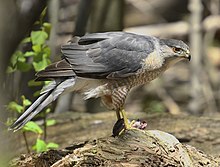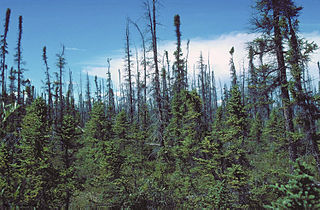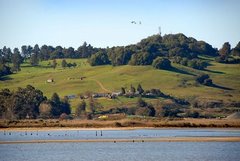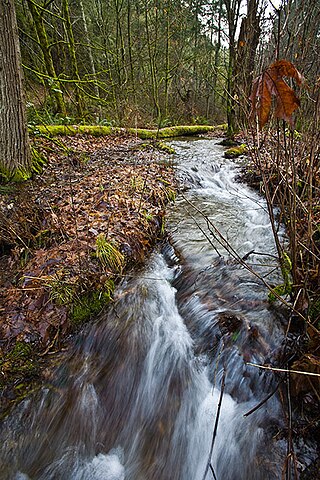
The fauna of Toronto include a variety of different species situated within the city limits. Toronto contains a mosaic of ecosystems that includes forests, rivers, streams, and wetlands, which allows it to support a large variety of fauna. [1] Approximately 87 to 90 per cent of the city's indigenous flora and fauna inhabit the city reside within the Toronto ravine system. [2] [3] [ better source needed ] The city's ravine system, creeks and rivers are wildlife corridors that allow animals to travel from one area of the city to another. [4] Although most animals in Toronto reside within the ravine system, several animals also live in the city's urban environment and parks.
Contents
- Vertebrates
- Amphibians and reptiles
- Birds
- Fish
- Mammals
- Invertebrates
- See also
- Notes
- References
- External links
The City of Toronto reports there are 24 species of amphibians and reptiles, 38 species of mammals, [note 1] over 410 bird species, and a large number of insect genera in the city. There are also over 100 species of fish reported within the Greater Toronto Area.
Toronto was also in the historic range of several other animals, although the city's urban growth in the 19th century and early 20th century led to these species' natural range to recede beyond the city limits.
























